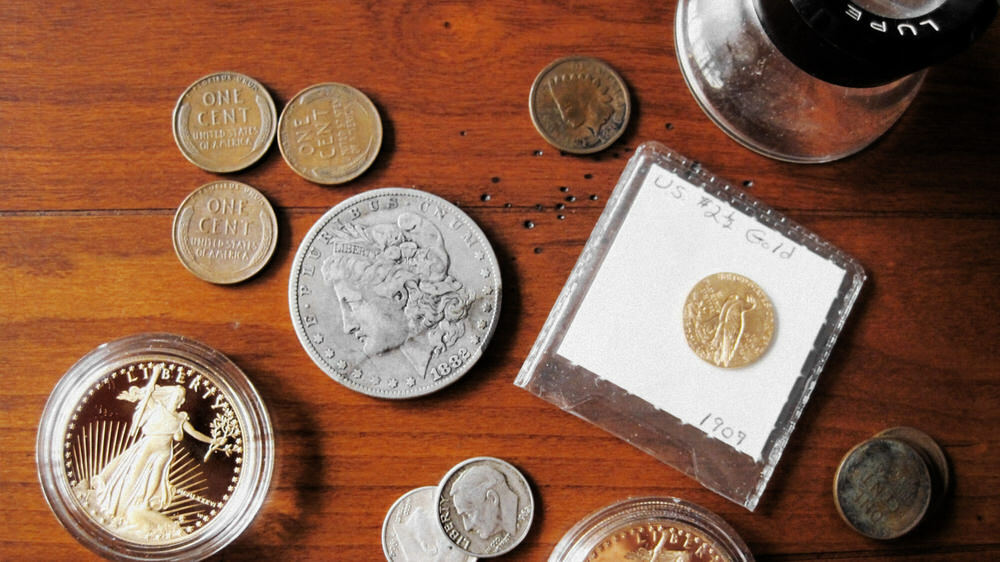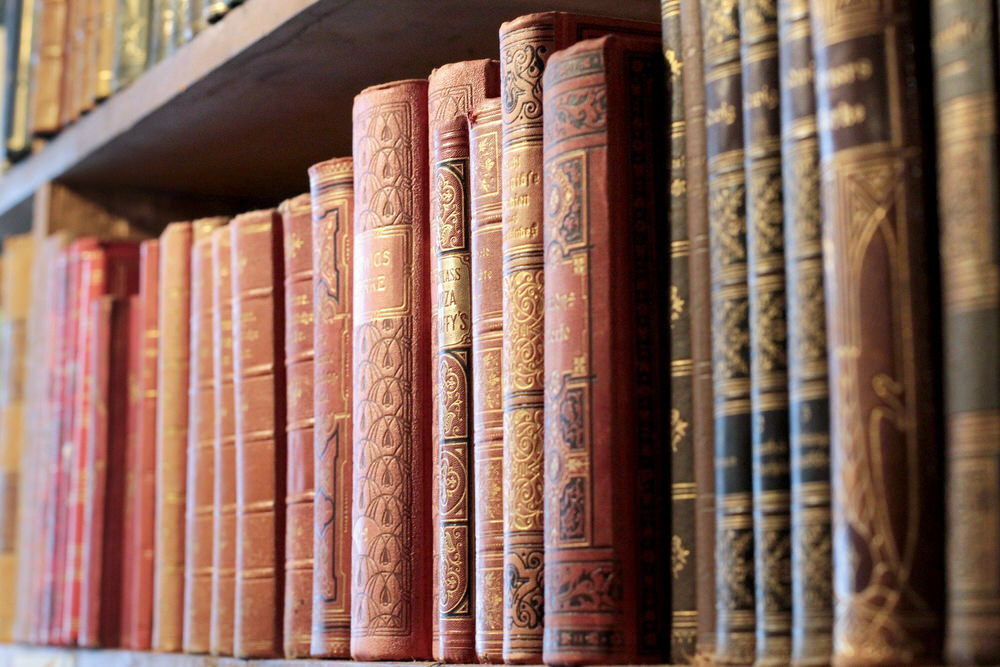Evaluating Old Coins & Paper Money
Use this guide to research the value of your old coins and paper money.

What Does Value Mean?
Basically, there are four different types of "value" for coins and bills:
- Book (or "catalog") value
- Buy price
- Retail value
- Wholesale value
Book value is an average of many dealers' retail prices for a certain coin or bill; in other words, what the average dealer would sell it for. This price is called the "book" value because you would typically find it in a published book such as the Standard Catalog of World Coins.
Buy price is the price that a dealer would be willing to pay you if you sold them your coin or bill.
Retail value is the price for which a dealer would sell a coin or bill to you. So, if a dealer wants to stay in business, they usually offers lower buy prices than retail prices.
Wholesale value is the price for which a dealer would sell a coin to another dealer. Wholesale value can also be a discounted price that a dealer would accept from a buyer who is purchasing in large quantities.
Factors That Affect Value
There are several factors that influence the value of a coin or bill:
- Rarity
- Demand
- Condition or Grade
Rarity involves the number (or "mintage") of coins or bills that were originally produced. Rarity also involves the number of those coins or bills that are still around today.
Demand varies according to the popularity and availability of a coin or bill:
- The demand might be higher or lower in different areas of the world, or during different years.
- To see demand in action, look at the prices on eBay's coin and paper money page - when more people want to buy a certain item (a high demand), the price often goes up.
Condition or Grade:
- Most price guides give values for several grades.
- Coins and bills can grade from "mint" or "uncirculated" (no signs of wear) to "poor".
- When a bill is in mint condition, it is worth more than the same bill in poor condition.
- There are specific standards that define what "mint," "poor," and other grades mean:
- If you're interested in coins, see the American Numismatic Association's Coin Grading brochure.
- If you're interested in paper money, refer to the International Bank Note Society's grading standards.
If a coin is too damaged to have value as a collectible, its metal content (the amount of gold or silver in the coin) may have a "basal" value. According to Roderick Hughes' Official Know-It-All Guide, Coins, you can find out the value of the metal if you:
- Multiply the weight of the coin by the percentage "fineness" of the coin (the percentage of the coin that is gold or silver). This will establish how much of the precious metal you have to sell.
- Multiply the result of the first calculation by the current price of the precious metal in the coin.
Kitco gives live market quotes for gold, silver, and other metals that can be used to make this calculation.
Finding Values for Currency
Before you begin looking for the value of a coin or bill, you need to know:
- Whether the coin or bill is a "general issue" or a "commemorative."
- Some price guides have separate sections for commemoratives or other "special" issues.
- Which country issued the coin or bill.
- A coin or bill's design often includes the name of the country, in that country's official language.
- Collectpapermoney.com has a list of image, denomination, and keyword "identifiers" that could help you figure out the issuing country.
- Nations Online offers a list of all the countries of the world and their local names.
- Banknote World includes scanned images of paper money.
- If you are researching the value of an older coin or bill, keep in mind that the country's name may have changed over time.
- A coin or bill's design often includes the name of the country, in that country's official language.
- The date (year) of the coin or bill.
- The condition of the coin or bill.
Once you know the date, country, and issue of a coin or bill, you can look up the value.
If your foreign coin or bill is only worth its "face" value, use OANDA to convert its value to U.S. dollars.
Guide Book of United States Coins (also known as the "Red Book"), is considered the standard reference for U.S. coin values.
Here are some other sources of information about U.S. currency:
- How to Grade U.S. Coins
- U.S. Mint's home page - History of the U.S. Mint and Collector's Corner offers a glossary and other basics on coin collecting.
Appraisals
The Pratt Library cannot appraise coins or bills. Hire a professional appraiser to grade your coins and tell you how much it is worth. The American Society of Appraisers and International Society of Appraisers have searchable directories of professional appraisers.
A dealer might also be able to help. The American Numismatic Association's offers a list of dealerships by state. You might also want to try the Professional Numismatists Guild's Dealer Directory, or the Professional Currency Dealer Association. If you want someone to appraise your paper money, the Society of Paper Money Collectors recommends that you visit a professional currency dealer.
How to learn more about coins and bills
- American Numismatic Association Frequently-Asked Questions (FAQs)
- Collectpapermoney.com
- Coinsheet's - International Mints
- Coin Today
- Coin World
- Join a Collectors Club
- American Numismatic Association
- International Bank Note Society
- Society of Paper Money Collectors
- Maryland State Numismatic Association has a helpful list of local coin clubs on its website.
- Go to a show! Coinshow.com lists upcoming shows in Maryland and other states.
Before you buy
There are a lot of scams out there! The Federal Trade Commission offers a helpful article, "Investing in Collectible Coins." The American Numismatic Association has a page of Consumer Awareness Resources.
Also, check the reputation of the dealer you are buying from. Though there are no guarantees, a coin dealer's membership in the American Numismatic Association or the Professional Numismatists Guild is a good sign. Both the ANA and the PNG require their members to uphold a strict code of ethics.
In Maryland, the Consumer Protection Division of the Attorney General's Office mediates complaints between customers and businesses.
If you need more help
Although the Pratt Library does not appraise coins or bills, we are happy to provide assistance in finding the book value for your currency, using print and electronic resources at our library.
As Maryland's State Library Resource Center, the Pratt Library has a broad collection of resources for coin and bill collectors. What we've mentioned in this guide is only the tip of the iceberg. If you've tried these sources, and you still can't find what you're looking for please contact us.

Evaluating Old Books
Use these resources to help you discover how much your old books are worth.

Evaluating Old Stock Certificates
Find out what to do with an old stock certificate, how to determine the value, and about collecting stock certificates.
If you would like to know more, try our Live Chat with a Librarian service, or contact us.





